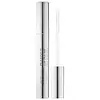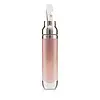What's inside
What's inside
 Key Ingredients
Key Ingredients

 Benefits
Benefits

 Concerns
Concerns

 Ingredients Side-by-side
Ingredients Side-by-side

Homosalate 15%
Skin ConditioningEthylhexyl Methoxycinnamate 7.5%
UV AbsorberEthylhexyl Salicylate 5%
UV AbsorberButyl Methoxydibenzoylmethane 3%
UV AbsorberHyaluronic Acid
HumectantNiacin
SmoothingPantothenic Acid
Skin ConditioningCeramide AP
Skin ConditioningHydrogenated Polyisobutene
EmollientEthylene/Propylene/Styrene Copolymer
Butylene/Ethylene/Styrene Copolymer
Octocrylene
UV AbsorberBenzyl Nicotinate
Skin ConditioningGlycerin
HumectantCetearyl Ethylhexanoate
EmollientSorbitan Isostearate
EmulsifyingPortulaca Pilosa Extract
Skin ConditioningSucrose Cocoate
EmulsifyingPalmitoyl Tripeptide-38
Skin ConditioningSodium Hyaluronate
HumectantMenthone Glycerin Acetal
RefreshingStevia Rebaudiana Leaf/Stem Powder
Skin ConditioningNiacinamide
SmoothingTocopheryl Acetate
AntioxidantHydrolyzed Sodium Hyaluronate
Skin ConditioningGlutathione
Ergothioneine
AntioxidantCeramide NP
Skin ConditioningCeramide EOP
Skin ConditioningPhytosphingosine
Skin ConditioningCholesterol
EmollientSodium Lauroyl Lactylate
EmulsifyingCarbomer
Emulsion StabilisingXanthan Gum
EmulsifyingYucca Schidigera Root Extract
Skin ConditioningSalix Alba Bark Extract
AstringentPanthenol
Skin ConditioningMentha Spicata Flower/Leaf/Stem Oil
MaskingMentha Piperita Oil
MaskingAroma
Homosalate 15%, Ethylhexyl Methoxycinnamate 7.5%, Ethylhexyl Salicylate 5%, Butyl Methoxydibenzoylmethane 3%, Hyaluronic Acid, Niacin, Pantothenic Acid, Ceramide AP, Hydrogenated Polyisobutene, Ethylene/Propylene/Styrene Copolymer, Butylene/Ethylene/Styrene Copolymer, Octocrylene, Benzyl Nicotinate, Glycerin, Cetearyl Ethylhexanoate, Sorbitan Isostearate, Portulaca Pilosa Extract, Sucrose Cocoate, Palmitoyl Tripeptide-38, Sodium Hyaluronate, Menthone Glycerin Acetal, Stevia Rebaudiana Leaf/Stem Powder, Niacinamide, Tocopheryl Acetate, Hydrolyzed Sodium Hyaluronate, Glutathione, Ergothioneine, Ceramide NP, Ceramide EOP, Phytosphingosine, Cholesterol, Sodium Lauroyl Lactylate, Carbomer, Xanthan Gum, Yucca Schidigera Root Extract, Salix Alba Bark Extract, Panthenol, Mentha Spicata Flower/Leaf/Stem Oil, Mentha Piperita Oil, Aroma
Vp/Va Copolymer
Butyrospermum Parkii Butter
Skin ConditioningTocopheryl Acetate
AntioxidantSodium Hyaluronate
HumectantCucumis Sativus Fruit Extract
EmollientSesamum Indicum Seed Oil
EmollientEucalyptus Globulus Leaf Oil
PerfumingMedicago Sativa Seed Powder
Skin ConditioningSesamum Indicum Seed Powder
Skin ConditioningPrunus Amygdalus Dulcis Seed Meal
AbrasiveHordeum Vulgare Extract
EmollientSalicornia Herbacea Extract
Skin ConditioningHelianthus Annuus Seedcake
AbrasiveOlea Europaea Fruit Oil
MaskingCitrus Aurantifolia Peel Extract
CleansingHelianthus Annuus Seed Wax
Skin ConditioningPersea Gratissima Oil
Skin ConditioningRicinus Communis Seed Oil
MaskingTheobroma Grandiflorum Seed Butter
Skin ConditioningCocos Nucifera Oil
MaskingAstrocaryum Murumuru Seed Butter
EmollientNiacin
SmoothingMagnesium Gluconate
Skin ConditioningZinc Gluconate
Skin ConditioningCalcium Gluconate
HumectantCopper Gluconate
Skin ConditioningSodium Gluconate
Skin ConditioningPalmitoyl Tripeptide-1
Skin ConditioningTourmaline
Malachite
Skin ConditioningPhytosphingosine
Skin ConditioningMenthyl PCA
HumectantPhytosterols
Skin ConditioningTribehenin
EmollientGlycerin
HumectantAcetyl Glucosamine
Skin ConditioningCholesterol
EmollientCaprylic/Capric Triglyceride
MaskingMenthoxypropanediol
MaskingEthylhexyl Palmitate
EmollientSimethicone
EmollientCalcium Aluminum Borosilicate
Calcium Sodium Borosilicate
Synthetic Fluorphlogopite
Aluminum Calcium Sodium Silicate
CI 77220
Cosmetic ColorantSilica
AbrasiveTin Oxide
AbrasiveWater
Skin ConditioningButylene/Ethylene/Styrene Copolymer
Titanium/Titanium Dioxide
Cosmetic ColorantPolyethylene Terephthalate
Propylene Glycol Dicaprate
EmollientPalmitic Acid
EmollientOleic Acid
EmollientEthylhexyl Hydroxystearate
EmollientSorbitan Isostearate
EmulsifyingGlyceryl Distearate
EmollientAlcohol Denat.
AntimicrobialHydrogenated Castor Oil
EmollientAroma
Linalool
PerfumingLimonene
PerfumingBenzyl Benzoate
AntimicrobialSodium Saccharin
MaskingBHT
AntioxidantTocopheryl Succinate
AntioxidantTetrahexyldecyl Ascorbate
AntioxidantAlumina
AbrasiveAcrylates Copolymer
Mica
Cosmetic ColorantCI 77891
Cosmetic ColorantCI 77492
Cosmetic ColorantCI 77491
Cosmetic ColorantCI 77499
Cosmetic ColorantCI 77163
Cosmetic ColorantCI 42090
Cosmetic ColorantCI 77400
Cosmetic ColorantCI 75470
Cosmetic ColorantCI 15850
Cosmetic ColorantCI 45380
Cosmetic ColorantCI 45410
Cosmetic ColorantCI 73360
Cosmetic ColorantCI 17200
Cosmetic ColorantCI 19140
Cosmetic ColorantCI 15985
Cosmetic ColorantVp/Va Copolymer, Butyrospermum Parkii Butter, Tocopheryl Acetate, Sodium Hyaluronate, Cucumis Sativus Fruit Extract, Sesamum Indicum Seed Oil, Eucalyptus Globulus Leaf Oil, Medicago Sativa Seed Powder, Sesamum Indicum Seed Powder, Prunus Amygdalus Dulcis Seed Meal, Hordeum Vulgare Extract, Salicornia Herbacea Extract, Helianthus Annuus Seedcake, Olea Europaea Fruit Oil, Citrus Aurantifolia Peel Extract, Helianthus Annuus Seed Wax, Persea Gratissima Oil, Ricinus Communis Seed Oil, Theobroma Grandiflorum Seed Butter, Cocos Nucifera Oil, Astrocaryum Murumuru Seed Butter, Niacin, Magnesium Gluconate, Zinc Gluconate, Calcium Gluconate, Copper Gluconate, Sodium Gluconate, Palmitoyl Tripeptide-1, Tourmaline, Malachite, Phytosphingosine, Menthyl PCA, Phytosterols, Tribehenin, Glycerin, Acetyl Glucosamine, Cholesterol, Caprylic/Capric Triglyceride, Menthoxypropanediol, Ethylhexyl Palmitate, Simethicone, Calcium Aluminum Borosilicate, Calcium Sodium Borosilicate, Synthetic Fluorphlogopite, Aluminum Calcium Sodium Silicate, CI 77220, Silica, Tin Oxide, Water, Butylene/Ethylene/Styrene Copolymer, Titanium/Titanium Dioxide, Polyethylene Terephthalate, Propylene Glycol Dicaprate, Palmitic Acid, Oleic Acid, Ethylhexyl Hydroxystearate, Sorbitan Isostearate, Glyceryl Distearate, Alcohol Denat., Hydrogenated Castor Oil, Aroma, Linalool, Limonene, Benzyl Benzoate, Sodium Saccharin, BHT, Tocopheryl Succinate, Tetrahexyldecyl Ascorbate, Alumina, Acrylates Copolymer, Mica, CI 77891, CI 77492, CI 77491, CI 77499, CI 77163, CI 42090, CI 77400, CI 75470, CI 15850, CI 45380, CI 45410, CI 73360, CI 17200, CI 19140, CI 15985
Ingredients Explained
These ingredients are found in both products.
Ingredients higher up in an ingredient list are typically present in a larger amount.
Aroma refers to an ingredient, or mixture of ingredients, that impart or mask a flavor.
The name is slightly confusing. This is because INCI associates aroma with flavor instead of smell.
Here is the official definition from the The International Cosmetic Ingredient Dictionary and Handbook:
“Aroma is a term for ingredient labeling used to identify that a product contains a material or combination of materials normally added to a cosmetic to produce or to mask a particular flavor.”
INCI shows the only purpose of aroma to be "flavouring".
However, due to regulation differences, some companies may use aroma in place of parfum.
In Canada, this ingredient only has to be listed in concentrations above 1%.
Learn more about AromaWe don't have a description for Butylene/Ethylene/Styrene Copolymer yet.
Cholesterol is a class of organic molecules called lipids. It helps hydrate your skin and is essential to having a healthy skin barrier.
Our skin naturally contains cholesterol in the outermost layer. Besides cholesterol, it also contains ceramides and fatty acids. Cholesterol makes up about 1/4 of your skin's outer layer and barrier. Your skin barrier is responsible for keeping allergens and microbes out. Having a healthy skin barrier is also responsible for keeping your skin firm and plump.
Our bodies use cholestrol to create vitamin D, steroid hormones, and more.
Learn more about CholesterolGlycerin is already naturally found in your skin. It helps moisturize and protect your skin.
A study from 2016 found glycerin to be more effective as a humectant than AHAs and hyaluronic acid.
As a humectant, it helps the skin stay hydrated by pulling moisture to your skin. The low molecular weight of glycerin allows it to pull moisture into the deeper layers of your skin.
Hydrated skin improves your skin barrier; Your skin barrier helps protect against irritants and bacteria.
Glycerin has also been found to have antimicrobial and antiviral properties. Due to these properties, glycerin is often used in wound and burn treatments.
In cosmetics, glycerin is usually derived from plants such as soybean or palm. However, it can also be sourced from animals, such as tallow or animal fat.
This ingredient is organic, colorless, odorless, and non-toxic.
Glycerin is the name for this ingredient in American English. British English uses Glycerol/Glycerine.
Learn more about GlycerinNiacin is the other form of B3, with the other being niacinamide. The two have similar skin benefits: reducing inflammation, strengthening the skin barrier, and fading dark spots.
Phytosphingosine is a phospholipid naturally found in our skin as a building block for ceramides.. It helps moisturize, soothe, and protect skin.
Phytosphingosine contributes to your skin's natural moisturizing factor (NMF). The NMF is responsible for hydration, a strong barrier, and plasticity. Our NMF decreases with age. Increasing NMF leads to more healthy and hydrated skin.
Studies show products formulated with NMF ingredients help strengthen our skin's barrier. Having a healthy skin barrier reduces irritation and increases hydration. Our skin barrier is responsible for having plump and firm skin. It also helps protect our skin against infection, allergies, and inflammation.
Fun fact: Phytosphingosine is abundant in plants and fungi.
More ingredients that help boost collagen in skin:
Learn more about PhytosphingosineSodium Hyaluronate is hyaluronic acid's salt form. It is commonly derived from the sodium salt of hyaluronic acid.
Like hyaluronic acid, it is great at holding water and acts as a humectant. This makes it a great skin hydrating ingredient.
Sodium Hyaluronate is naturally occurring in our bodies and is mostly found in eye fluid and joints.
These are some other common types of Hyaluronic Acid:
Learn more about Sodium HyaluronateSorbitan Isostearate is an emulsifer and cleaning agent. It is created from isostearic acid and sorbitol.
As an emulsifier, Sorbitan Isostearate prevents oils and water from separating.
Due to its isostearic acid base, it may not be safe for Malassezia or fungal acne.
Learn more about Sorbitan IsostearateTocopheryl Acetate is AKA Vitamin E. It is an antioxidant and protects your skin from free radicals. Free radicals damage the skin by breaking down collagen.
One study found using Tocopheryl Acetate with Vitamin C decreased the number of sunburned cells.
Tocopheryl Acetate is commonly found in both skincare and dietary supplements.
Learn more about Tocopheryl Acetate